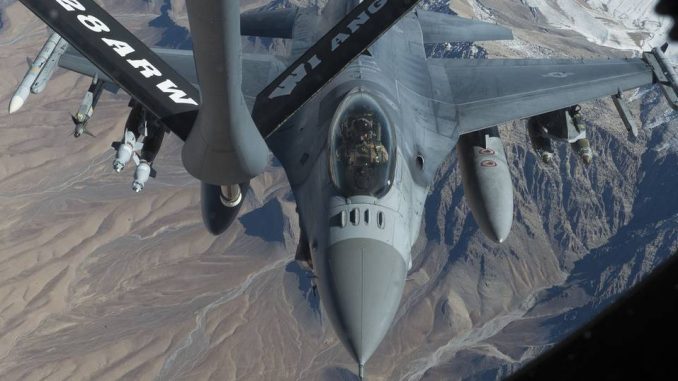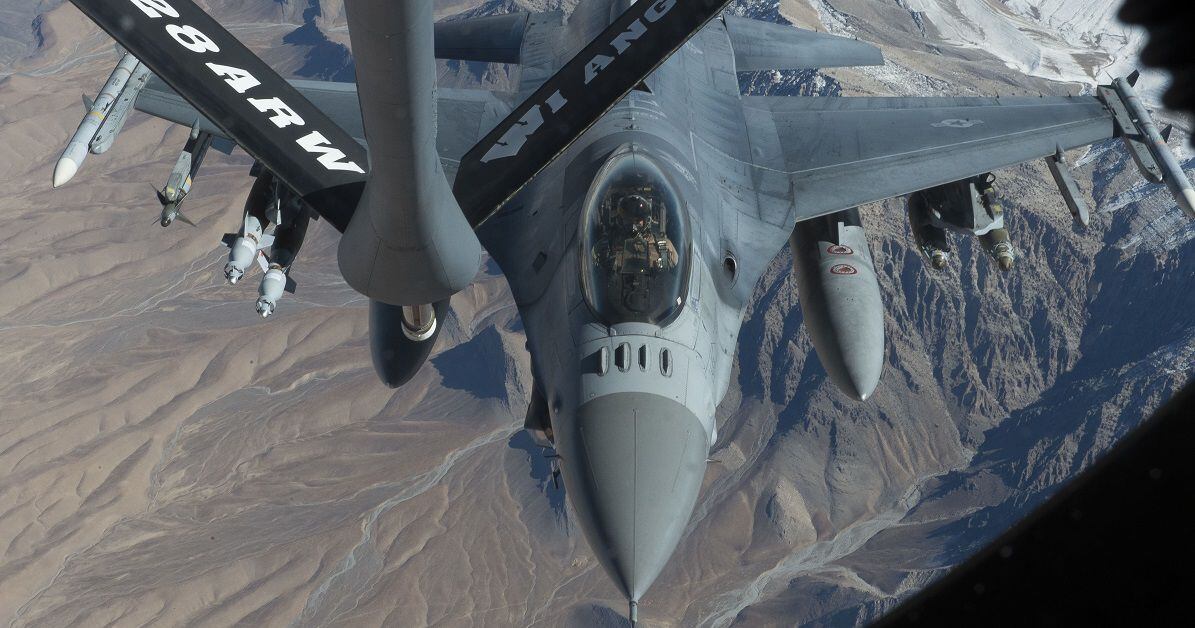

The U.S. military and coalition aircraft dropped 153 munitions in Afghanistan in August, the most since October 2020, as the U.S. and the now-defunct Islamic Republic of Afghanistan desperately tried to beat back the advance of the Taliban across the country ahead of the withdrawal of U.S. troops. That offensive eventually overwhelmed Kabul, the capital, Aug. 15.
On Friday, Defense Department spokesman John Kirby told reporters the information on air strikes and sorties in Central Command, withheld from the public since the U.S. and the Taliban signed the Doha Agreement to end the war in March 2020, was being released at the direction of Defense Secretary Lloyd Austin.
“It is important to remember that during this time, DoD continued to … collect and analyze the data and provided it to inspectors general for inclusion in their regular reports to Congress,” Kirby said.
The data shows a stark reduction in the use of U.S. and coalition airpower in Afghanistan immediately following the implementation of the peace agreement. It then picked back up in the late summer and fall as the Taliban waged a bloody campaign against Afghan army and police forces, reaching a high of 246 munitions expended in October 2020.
In February 2020, manned and unmanned U.S. military and coalition aircraft released 360 munitions in Afghanistan. This number fell to 116 in March, 27 in April and only 15 in May as a U.S. and Taliban cease-fire, part of the U.S. withdrawal conditions, went into full effect. After air strikes spiked in October, the number of weapons released each month remained above 100 through April, then fell steadily back down to 18 by July 2021 before spiking again during the Taliban’s final push to Kabul.
No air strikes have been launched against targets in Afghanistan since the U.S. withdrawal.
During an Aug. 31 address to the nation as U.S. involvement in Afghanistan ended, President Biden issued a warning to ISIS-K, which was purported to have been behind the attack that took the lives of 13 U.S. troops guarding Hamid Karzai International Airport in Kabul.
The president alluded to “over-the-horizon” capabilities that enable the U.S. military to strike targets “without American boots on the ground.”
“And to ISIS-K: We are not done with you yet,” Biden said during his speech.
However, despite congressional testimony from defense officials in October warning that ISIS-K intends to strike international targets and could have the capability to do so in as little as six months, the group has not been targeted since U.S. troops left.
As expected, the use of airpower is down across the CENTCOM area of operations. With U.S. plans to end its combat role in Iraq by Dec. 31, strikes in support of Operation Inherent Resolve have declined dramatically. Through November of this year, manned and unmanned aircraft have released a total of 554 munitions in Iraq and Syria combined, down from 1,188 the year before.
During the height of the air war against the Islamic State in Iraq and Syria , U.S. and coalition aircraft released 39,577 munitions. In June 2017, aircraft under the control of Combined Forces Air Component Commander released a record 4,848 munitions, only to set a new record in August 2017 when AFCENT reported releasing 5,075 munitions against targets.
After the coalition eradicated ISIS’ so-called “caliphate” across Iraq and Syria, the number of munitions released waned considerably. In 2018, roughly 8,700 munitions were released in support of Operation Inherent Resolve. That fell to a little over 4,700 in 2019, and 1,188 in 2020.
From August through November of 2021, U.S. and coalition aircraft dropped a total of just 17 munitions across the entire OIR area of responsibility. Currently, the U.S. has roughly 2,500 troops in Iraq dedicated to assisting Iraqi Security Forces in eliminating what remains of ISIS in that country.
While it is unclear how many U.S. troops will remain in Iraq in 2022, those there will be in an “advise and assist” role rather than participating in combat missions on behalf of their Iraqi hosts. According to the Associated Press, U.S. and coalition ground troops have not led combat missions there since early 2020.
James R. Webb is a rapid response reporter for Military Times. He served as a US Marine infantryman in Iraq. Additionally, he has worked as a Legislative Assistant in the US Senate and as an embedded photographer in Afghanistan.


Be the first to comment